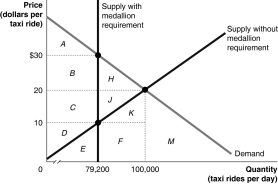Figure 4-14  Figure 4-14 shows the market for taxi rides. The following question(s) are based on this figure.
Figure 4-14 shows the market for taxi rides. The following question(s) are based on this figure.
-Refer to Figure 4-14. To legally drive a taxicab in New York City, you must have a medallion issued by the city government. Assume that only 13,200 medallions have been issued. Let's also assume this puts an absolute limit on the number of taxi rides that can be supplied in New York City on any day, because no one breaks the law by driving a taxi without a medallion. Assume as well that each taxi provides 6 trips per day. In that case, the quantity supplied of taxi rides is 79,200 (or 6 rides per taxi × 13,200 taxis). This is shown in the diagram with a vertical line at this quantity. Assume that there are no government controls on the prices that drivers can charge for rides.
a. What would the equilibrium price and quantity be in this market if there were no medallion requirement?
b. If there were no medallion requirement, indicate the area that represents consumer surplus.
c. If there were no medallion requirement, indicate the area that represents producer surplus.
d. If there were no medallion requirement, indicate the area that represents economic surplus.
e. What are the price and quantity with the medallion requirement?
f. With a medallion requirement in place, what area represents consumer surplus?
g. With a medallion requirement in place, what area represents producer surplus?
h. With a medallion requirement in place, what area represents the deadweight loss?
i. Based on your answers to parts (c) and (g), are taxicab drivers better off with the medallion requirement for taxicabs than without?
j. Are consumers better off with or without the medallion requirement for taxicabs?
Correct Answer:
Verified
b. Consum...
View Answer
Unlock this answer now
Get Access to more Verified Answers free of charge

